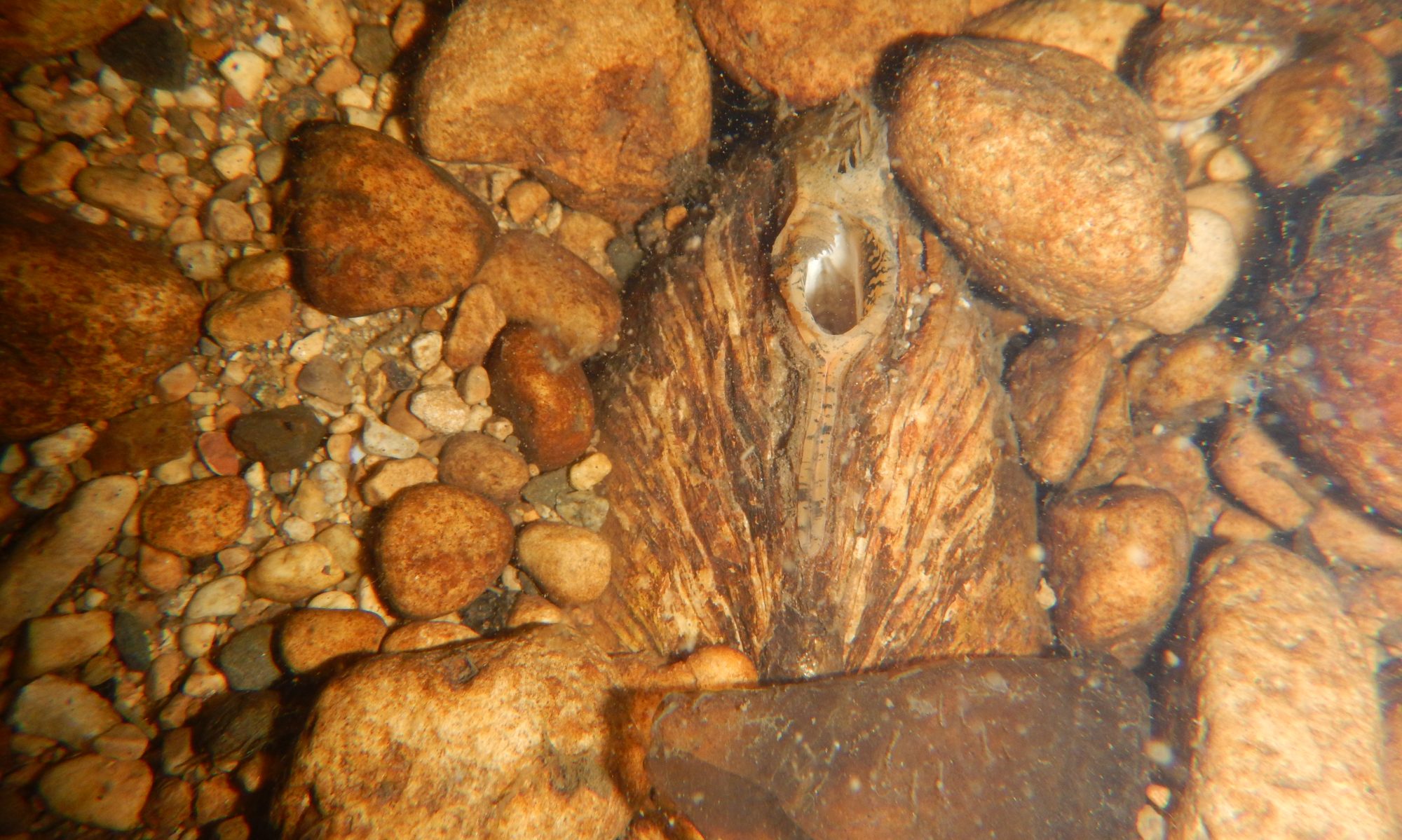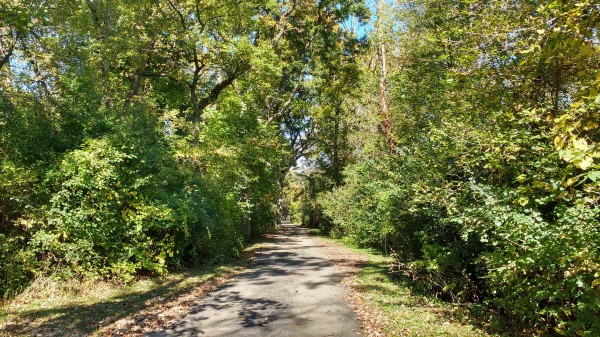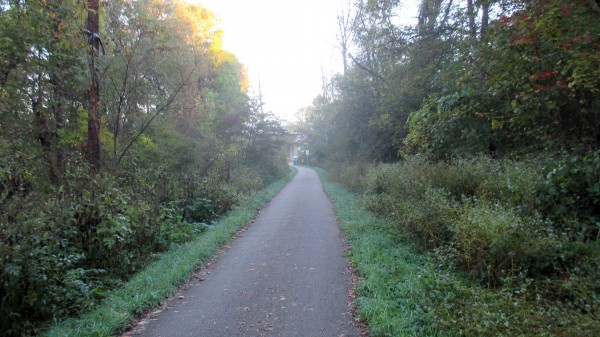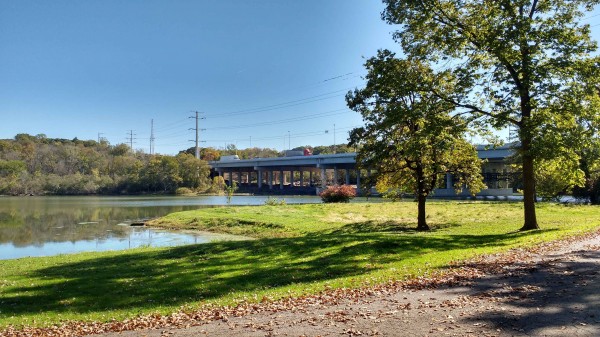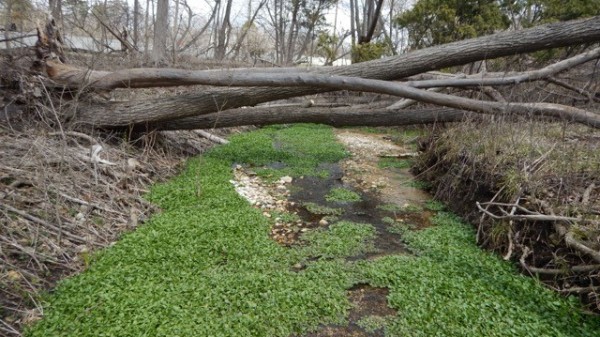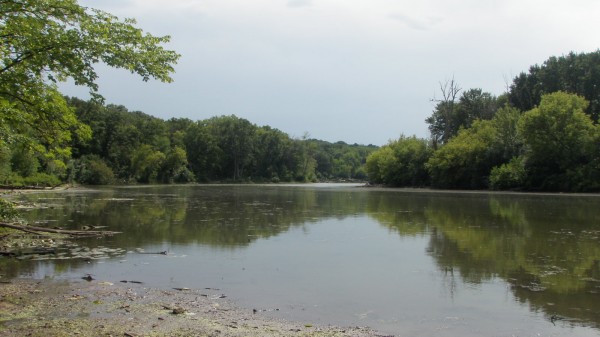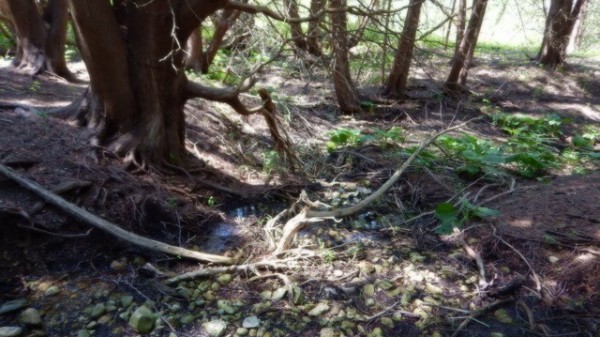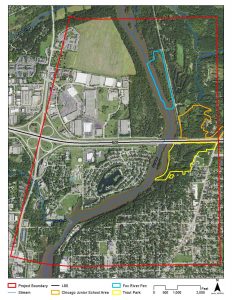 Trout Park, Fox River Forested Fen Nature Preserve, and Voyageur Landing Forest Preserve (collectively, Trout Park complex) are 3 woodland habitat patches covering ~25 ha along the Fox River at I-90. The fen system is a significant habitat in Illinois with a relic aquatic macroinvertebrate community
Trout Park, Fox River Forested Fen Nature Preserve, and Voyageur Landing Forest Preserve (collectively, Trout Park complex) are 3 woodland habitat patches covering ~25 ha along the Fox River at I-90. The fen system is a significant habitat in Illinois with a relic aquatic macroinvertebrate community
representative of more northern habitats.
The Trout Park Complex and the Fox River watershed have great potential for habitat improvement and restoration. The new I-90 bridge over the Fox River was designed to allow water to run off into a single detention area, which acts as a filtration system to protect the sensitive wetlands from future degradation.
Before the bridge replacement, we surveyed for mollusks, aquatic macroinvertebrates, amphibians, reptiles, and birds. After completing the bridge, we deployed acoustic monitors to monitor bat activity at Trout Park.
The Fox River, a tributary of the Illinois River, is a heavily modified stream, with many impoundments, and as such, the mussel community at this site is depauperate. In our surveys we found:
-
- 5 live individuals of Giant Floater, Pyganodon grandis
- 1 native snail species, Liver Elimia, Elimia livescens was abundant
- 1 non-native, invasive Chinese Mystery Snail, Cipangopaludina chinensis was abundant
We surveyed 2 springs (one north and one south of I-90) using surber samples for benthic macroinvertebrates and D-net sweeps and hand collecting. We collected 32 taxa of aquatic macroinvertebrates, including 10 EPT taxa including:
– 1 taxa of Ephemeroptera (mayflies)
– 3 taxa of Plecoptera (stoneflies)
– 5 taxa of Trichoptera (caddisflies)
– 3 taxa of Coleoptera (beetles)
– 10 taxa of Diptera (flies)
The amphibian and reptile populations in the Trout Park Complex are limited to common, tolerant species. We detected:
– 5 species of amphibians
American Toad, Anaxyrus americanus (15),
Bullfrog, Lithobates catesbeianus (6),
Green Frog, Lithobates clamitans (3),
Northern Leopard Frog, Lithobates pipiens (1),
Southern Leopard Frog, Lithobates sphenocephalus (9)
– 3 species of reptiles,
Spiny Softshell, Apalone spinifera (4),
Painted Turtle, Chrysemys picta (3),
Red-Eared Slider, Trachemys scripta (1)
No snakes or salamanders were documented during our surveys, but management for a diversity of habitats with heterogeneous structure could encourage the persistence of amphibian and reptile populations at the site.
Trout Park serves as important stopover habitat for migrants and contains higher avian diversity relative to similar urban forested areas. During our surveys, we detected 74 bird species including a state endangered Osprey.
The most common bird species were
– Cedar Waxwing
– American Robin
– Red-winged Blackbird
We deployed acoustic monitors and identified calls from 4 species of bat:
-
- Hoary Bat
- Big Brown Bat
- Eastern Red Bat
- Silver-haired Bat
We found that the site is mostly used during the summer maternity season rather than during migration. Improvements to the habitat, reducing invasive shrubs in the forest understory, and increasing connectivity between forest patches could increase bat occupancy.
